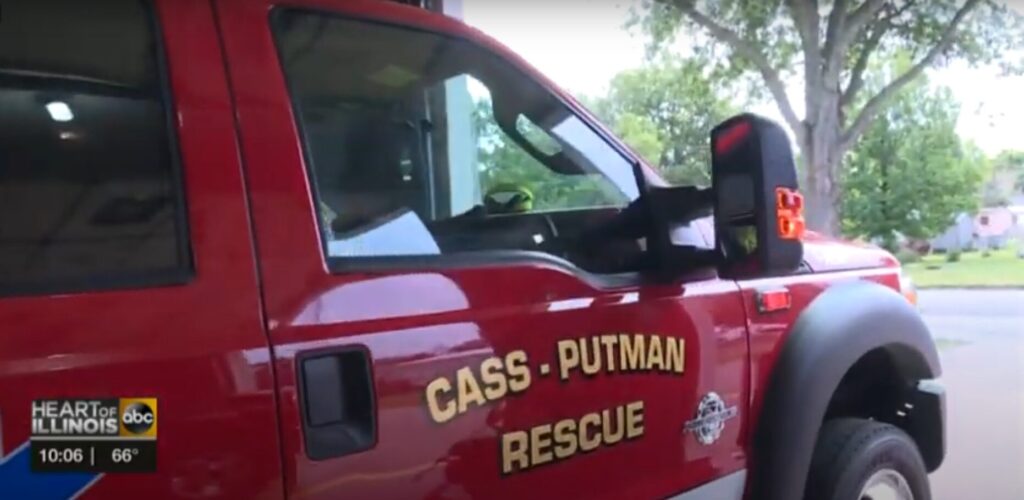By Joe Brewer
When Thomas bolted out of my history class to respond to an accident on a remote road in our rural community, his training as a student EMT helped him turn fear into action. At just 17 years old, Thomas was the first to arrive on the scene—a heavy responsibility for someone his age—but he didn’t hesitate. He assessed the injured driver, applied a bandage, and stabilized the individual until paramedics arrived. When Thomas returned to class, he reflected on the experience. “It’s scary, but the training kicks in. You don’t have a lot of time to be afraid when people need help.”
This experience was made possible by our community’s emergency medical technician program, a partnership between our school and a volunteer EMT director. The result is a work-based learning initiative that trains teens as first responders, addressing a critical need in our rural area where some residents live over 45 minutes from the nearest hospital. Thomas’s story demonstrates how purpose-driven learning can transform education, equipping students with life-saving skills while strengthening their communities.
But programs like these remain the exception rather than the rule. Outdated systems in our schools—designed decades ago around earning course credits instead of fostering career exploration—fail to connect students with pathways that align with their dreams. This disconnect is costly. In Illinois, 87 of 102 counties lost population between 2010 and 2020, with rural areas hit the hardest. As young people leave in search of opportunities, local employers struggle to find skilled workers, creating a cycle that threatens the vitality of these communities. Rural schools, however, are uniquely positioned to lead the charge in breaking this cycle with Career and Technical Education (CTE) opportunities because of close community ties and a deep understanding of our students’ strengths. CTE is especially necessary in the times in which we live. A survey by American Student Assistance and Jobs for the Future found that 64% of students who hadn’t pursued pathways like apprenticeships or certifications might have done so if they’d known about them. To transform education, we must take bold steps to reimagine schools as centers of meaning and connection:
- Reimagine hands-on learning for students and teachers: We must embrace creative, real-world learning experiences. In my history club, for example, students partnered with a local museum director who encouraged them to think innovatively about challenges in preserving local history. The director’s approach included everything from carpentry and graphic design to storytelling, digital archiving, and event planning. Teachers also play a vital role in bridging academics with career readiness, but many lack opportunities to connect with evolving industries. Teacher externships—immersive experiences in workplaces related to their teaching fields—help teachers understand current career trends and integrate relevant skills into their curriculum.
- Adopt flexible schedules: Rigid school schedules often keep students isolated from opportunities to apply their creativity and passions in the community while flexible ones open doors to meaningful, hands-on projects. Take Braxton, a student who discovered our town was once the strip mining capital of the world, a history largely forgotten by the community. After a football injury sidelined him from PE, Braxton received special permission to use the time to visit Mr. Mowery, an elderly retired teacher and the town’s unofficial mining historian. Mr. Mowery shared rare sources like out-of-print books, photographs, and invaluable anecdotes. Braxton not only digitized articles and recorded interviews with Mr. Mowery, he also captured stories from some of the last living miners, many nearing 100 years old.
- Reframe school boundaries: Just as rural athletic programs form co-ops to sustain teams, schools can collaborate across districts to share teachers, programs, and resources. The Spoon River CEO program in rural Illinois is a great example, pooling resources from multiple schools to provide entrepreneurial learning opportunities for students countywide. Students run businesses, connect with local mentors, and gain exposure to area industries..
Rural communities draw strength from their traditions, passed down through generations,providing a foundation for adapting how we prepare students for the future. Change isn’t easy—it can feel uncomfortable at first. On my desk sits a replica of a 1G cell phone (for my millennial friends, it’s the one Zack Morris used on Saved by the Bell). I keep it there as a reminder that innovation has to start somewhere. Yes, the first attempt may look silly and outdated in hindsight, but without it, progress stalls. Reimagining our schools means building on the strength of our traditions while embracing new approaches to meet the challenges ahead.
Thomas’s story reminds us of what’s possible. His training didn’t just save a life that day; it set him on a path of purpose. Now a college student, Thomas continues to serve as an EMT while studying for a career in the medical profession—a testament to how education can meet real-world needs and inspire lifelong impact. By empowering students like Thomas to lead, teachers to innovate, and schools to change, we can build an education system that not only prepares students for the workforce but also strengthens the communities they call home.
Joe Brewer is a teacher dean at Beardstown Community Unit School District #15 in Beardstown, Illinois and a 2024-2025 Teach Plus Illinois Policy Fellow.

